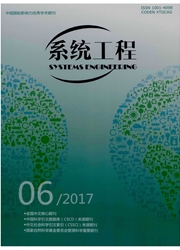

 中文摘要:
中文摘要:
钢存量是未来二次资源的潜在来源。利用二次资源进行钢铁生产能够降低钢铁工业对铁矿石的依赖.并且能够有效解决当前钢铁行业高能耗、高排放、高污染的问题。掌握钢在中国工业化演进过程中的沉淀运动规律。能够为资源战略、产业政策和环境政策的制定提供科学依据。并为钢铁工业实现循环经济和可持续发展提供战略指导。本文从存量和流量动态性的视角出发.利用国际上新兴的动态物质流分析方法,对工业化演进过程中中国国家层面1949—2012年钢人为沉淀运动规律进行研究。研究结果表明,钢的沉淀运动情况与中国国家工业化进程的所处阶段高度相关。建国后中国钢总存量和人均存量随着工业化进程的演进缓慢增长.然后于国民经济和社会发展的“九五”中期进入快速增长阶段。并于“十一五”时期进入迅速增长阶段。在进入“十二五”时期以后。中国钢总存量和人均存量进一步增长。钢持续蓄积于中国社会经济系统之中。其中.建筑中蓄积的钢存量最多.其次为机械设备。再次为交通运输设备。2006年.中国人均钢存量达到了2t/人.此数值被认为是社会建设进入强劲发展阶段的临界值.而此时正值中国“十一五”时期的开端。2011年和2012年中国人均钢存量分别约为3.69t/人和4.05t/人.尚未出现人均存量饱和的趋势。钢存量会进一步增加。基于实证研究结果,我国应该进行钢产品消费结构的指导。加大循环技术的研发力度、增加钢二次生产能力的投资,以及进一步开展钢人为沉淀运动的预测研究.以充分掌握钢的未来消费、蓄积以及退役规律。
 英文摘要:
英文摘要:
Steel stock is the potential source of secondary resources. The use of secondary resources in the production process of iron and steel can reduce the dependence on iron ore, and can also effectively solve the problems of high energy consumption, high emission and high pollution. The precipitation pattern of steel in the evolution of Chinese industrialization process can provide scientific basis for the resource strategy, industrial policy and environmental policy, and can also provide the strategic guidance for circular economy and sustainable development in iron and steel industry. In this paper, anthropogenic precipitation movement of steel resource is studied using dynamic material flow analysis from the perspective of stock and flow dynamics between 1949 and 2012 at Chinese national level. The results show that there is close connection between the precipitation changes of steel resources and the stages of Chinese national industrialization process. Total stock and per capita stock of steel resource grew slowly with the evolution of industrialization process after the founding of China, and then grew quickly from the middle of the Ninth Five Year Plan, and finally entered into the rapid growth phase in the period of the 1 lth Five Year plan of national economy and social development. The total stock and per capita stock of steel grew further after entering the Twelfth Five Year period, steel is stored continuously in the social and economic system of China. Among them, most of the stock is contained in construction, followed by mechanical and transportation equipments. Per capita stock of steel resource in 2006 reached the critical value of 2t, which means the strong development phase is showed up, and it is the beginning of the llth Five Year plan in China. Per capita stock of steel is about 3.69 t/cap and 4.05 t/cap in 2011 and 2012 respectively, the saturation trend of per capita stock has not yet appeared, the stock in Chinese society will increase further. Based on the results of the empirical research,
 同期刊论文项目
同期刊论文项目
 同项目期刊论文
同项目期刊论文
 期刊信息
期刊信息
